CERÂMICA DA LAGOA


Português

Um pouco sobre a Cerâmica da Lagoa e da sua história
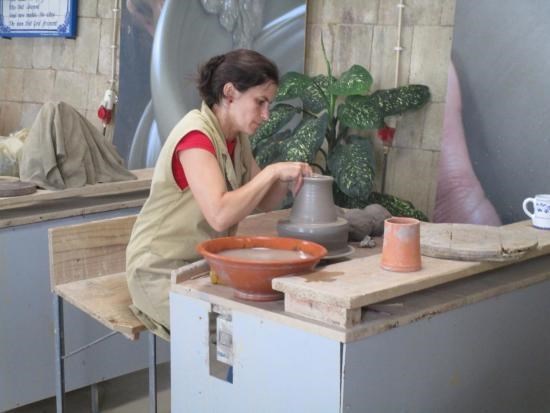
A Cerâmica é a arte de quem confeciona louça dos Açores que atingiu níveis reconhecidos mundialmente.
A cerâmica foi fundada, na Lagoa, em 1862 por Bernardino da Silva, natural de Vila Nova de Gaia. São produzidas peças feitas manualmente, onde o azul é a cor dominante. A decoração e os desenhos são deixados a critério artístico dos artesãos.
Quando, em 1862, Bernardino da Silva, chegou a S. Miguel acompanhado de um verdadeiro técnico de cerâmica vidrada de nome Manuel Leite Pereira, este empreendimento teve não só lugar no Porto dos Carneiros, na Lagoa, mas em todo o Arquipélago.
Assim se estabeleceu a primeira fábrica, numa tranquila baía desta cidade de Lagoa, onde as embarcações vinham descarregar as bolas de barro da Ilha de Santa Maria. Este era um material misturado com areia e barro para o fabrico de louça.
Entretanto, em 1882, a cerâmica recebeu vários prémios na Primeira Exposição Portuguesa, assim como em 1888 esta indústria também foi premiada com medalha de cobre.
O fabrico de louça manteve-se praticamente inalterável desde o tempo dos primeiros colonos, tempo em que tudo era feito à mão e amassado com os pés nos tanques onde as impurezas eram filtradas, passando por outros tanques onde procedia para a técnica de baldeação e passava-se para a fase de secagem. O barro passava então para o “laminador”, onde ia sendo aperfeiçoada a textura até se conseguir uma massa moldável.
Apesar de passados tantos séculos e da modernização da maquinaria com que se trabalha a louça continuam a ser os artesãos a determinar a qualidade do trabalho.
CERÂMICA
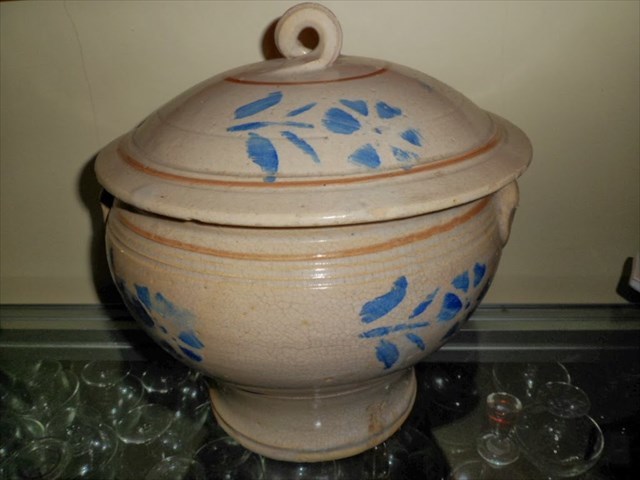
A cerâmica é a arte ou a técnica de produção de artefactos de objetos tendo a argila como matéria prima. Geralmente uma cerâmica é um óxido metálico, boreto, carbeto, nitreto, ou uma mistura que pode incluir aniões.
A cerâmica foi inventada no período neolítico (idade da pedra polida) em 25.000 a.C. As peças de cerâmica mais antigas são conhecidas por arqueólogos, foram encontradas na Checoslováquia, datando de 24.500 a.C. Outras importantes peças foram encontradas no Japão, na área ocupada pela cultura Jomon há cerca de oito mil anos, talvez mais. Peças assim também foram encontradas no Brasil na região da Floresta Amazônica com a mesma idade. A capacidade da argila de ser moldada quando misturada em proporção correta de água, e de endurecer após a queima, permitiu que ela fosse destinada ao armazenamento de grãos ou líquidos, que evoluíram posteriormente para artigos mais elaborados, com bocais e alças, imagens em relevo, ou com pinturas vivas que possivelmente passaram a ser considerados objetos de decoração. Imagens em cerâmica de figuras humanas ou humanoides, representando possivelmente deuses daquele período também são frequentes. Parte dos artesãos também chegou a usar a argila na construção de casas rudes.
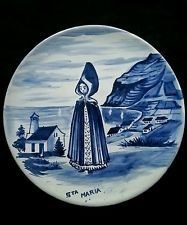
Tipos de cerâmica:
- Cerâmica Tradicional
Inclui cerâmica de revestimentos, como ladrilhos, azulejos e também potes, vasos, tijolos e outros objetos que não tem requisitos tão elevados se comparados ao grupo seguinte.
- Cerâmica “Avançada” criatura ou de engenharia
Geralmente são materiais com solicitações maiores e obtidos a partir de matéria-prima mais pura. São abstraídos motivo, ferramentas de corte para usinagem, tijolos refratários para fornos.
As principais matérias-primas são o Feldspato (particularmente os potássicos), a sílica e a argila. Além destes três principais componentes, as cerâmicas podem apresentar aditivos para o incremento de seu processamento ou de suas propriedades finais. Após submetida a uma secagem lenta à sombra para retirar a maior parte da água, a peça moldada é submetida a altas temperaturas que lhe atribuem rigidez e resistência mediante a fusão de certos componentes da massa, fixando os esmaltes das superfícies. A cerâmica pode ser uma atividade artística, em que são produzidos artefactos com valor estético, ou uma atividade industrial, através da qual são produzidos artefactos com valor utilitário. De acordo com o material e técnicas utilizadas, classifica-se a cerâmica em:
terracota - argila cozida no forno, sem ser vidrada,
embora, às vezes, pintada.
cerâmica vidrada - o exemplo mais conhecido é o azulejo.
grés -cerâmica vidrada, às vezes pintada, feita de pasta
de quartzo, feldspato, argila e areia.
faiança -louça fina obtida de pasta porosa cozida a altas
temperaturas, envernizada ou revestida de esmalte sobre
o qual pintam-se motivos decorativo.
Cerâmica Artística
Com possível exceção do fabrico de tijolos e telhas, geralmente utilizados na construção desde a antiguidade na Mesopotâmia, desde muito cedo a produção cerâmica deu importância fundamental à estética, já que seu produto, na maioria das vezes, destinava-se ao comércio. Talvez por esta razão a maioria das culturas, desde seus albores, acabou por desenvolver estilos próprios que com o passar do tempo consolidavam tendências e evoluíam no aprimoramento artístico, a ponto de se poder situar o estado cultural de uma civilização através do estudo dos artefatos cerâmicos que produzia. Afora a cerâmica para a construção, a cerâmica meramente industrial só ocorreu na Antiguidade em grandes centros comerciais, iniciando vigorosa etapa com a Revolução industrial. Com a utilização da porcelana, a cerâmica alcançou níveis elevados de sofisticação. Um exemplo notório da cerâmica artística em Portugal é a barrista Rosa Ramalho que usou a argila para criar as figuras surrealistas do seu imaginário.
Cerâmica industrial
A indústria cerâmica é responsável pela fabricação de pisos, azulejos e revestimento de larga aplicação na construção civil, bem como pela fabricação de tijolos, lajes, telhas, entre outros. Ainda, o setor denominado cerâmica tecnológica, é responsável pela fabricação de componentes de alta resistência ao calor e de grande resistência à compressão. Atualmente a cerâmica é objeto de intensa pesquisa tendo em vista o aproveitamento de várias das propriedades físicas e químicas de um grande número de materiais, principalmente a semicondutividade, supercondutividade e comportamento adiabático.
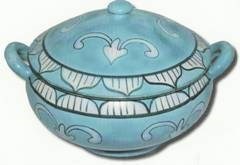
MULTI – CACHE
Esta multi-cache é composta por dois pontos: o pronto inicial localizado no exterior da “cerâmica” (WP0) e o GZ. Para encontrar o GZ deverá encontrar os valores de A e B, sendo:
A = número de letras existente no azulejo do “menino Jesus com São José”
Existente, na fachada do edifício, à direita da porta;
B = número de aves (gaivotas) existente no azulejo do “Infante D. Henrique”,
do artista” P. Cavaco”.
Para encontrar o GZ desta multi:
N 37º 45, (0)(2A + 44)
W 025º 34, (30A-10B-10)
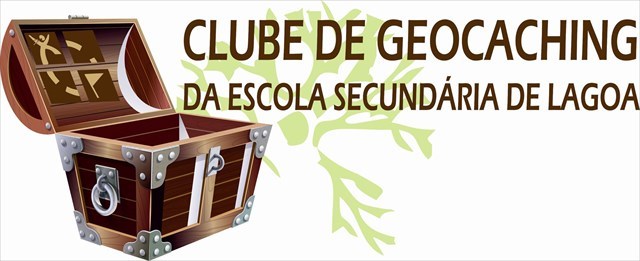
A CAIXA
A caixa tem um formato convencional.
Por favor, sejam discretos, não façam logs forçados, nem postem fotos que possam denunciar a cache.
Deixem o contentor tal como o encontraram!
POTTERY CERAMICS
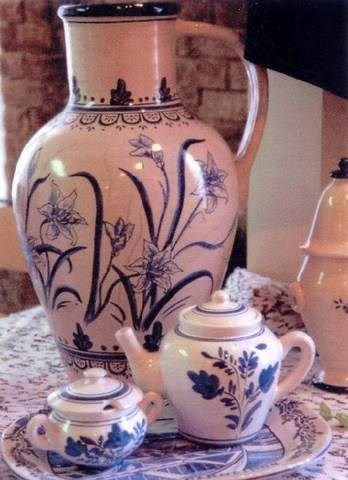
ENGLISH

A little about the Ceramics of “Lagoa” and its history
.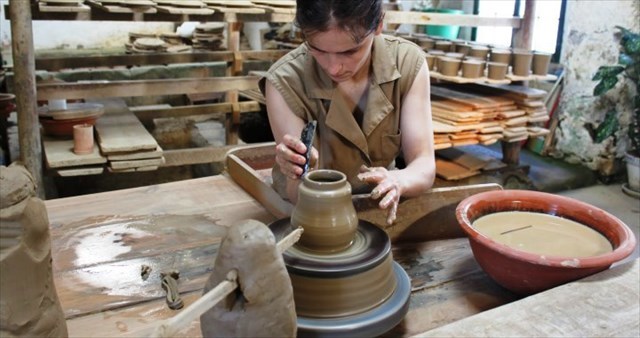
Ceramics is the art of those who cooks dishes from the Azores that reached levels recognized worldwide.
The pottery was founded in Lagoa in 1862 by Bernardino da Silva, born in Vila Nova de Gaia. Hand made pieces are produced, where blue is the dominant color. The decoration and the drawings are left to the artistic criterion of the artisans.
When, in 1862, Bernardino da Silva arrived in S. Miguel accompanied by a true glazed ceramic technician named Manuel Leite Pereira, this enterprise had not only a place in the Port of Carneiros, in the Lagoon, but throughout the Archipelago.
Thus was established the first factory, in a quiet bay of this city of Lagoa, where the boats came to discharge the clay balls of the Island of Santa Maria. This was a material mixed with sand and clay for the manufacture of crockery.
However, in 1882, ceramics received several prizes at the First Portuguese Exhibition, just as in 1888 this industry was also awarded a copper medal.
The manufacture of crockery remained practically unchanged from the time of the first settlers, when everything was done by hand and kneaded with the feet in the tanks where the impurities were filtered, passing through other tanks where it proceeded for the technique of transfer and passed for the drying phase. The clay then passed to the "mill", where the texture was being perfected until a moldable mass was achieved.
Despite the centuries of modernization and the modernization of the machinery used to make the dishes, artisans continue to determine the quality of work.
CERAMIC
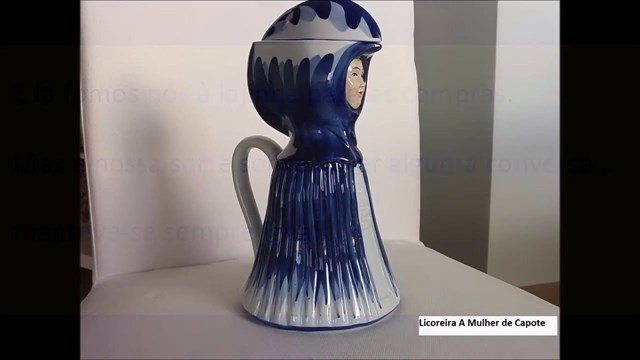
Pottery is the art or technique of producing artefacts of objects having the clay as raw material. Generally a ceramic is a metal oxide, boride, carbide, nitride, or a mixture which may include anions.
Pottery was invented in the Neolithic period (age of the polished stone) in 25,000 BC The earliest ceramic pieces are known to archaeologists, were found in Czechoslovakia, dating to 24,500 BC Other important pieces were found in Japan in the area occupied by the Jomon culture about eight thousand years ago, maybe more. Such pieces were also found in Brazil in the region of the Amazon Forest with the same age. The clay's ability to be molded when mixed in the right proportion of water and to harden after firing allowed it to be destined for storage of grains or liquids, which later evolved into more elaborate articles with nozzles and handles, embossed images , or with live paintings that possibly happened to be considered objects of decoration. Ceramic images of human or humanoid figures, possibly representing gods of that period are also frequent. Part of the artisans also came to use clay in the construction of rude houses.
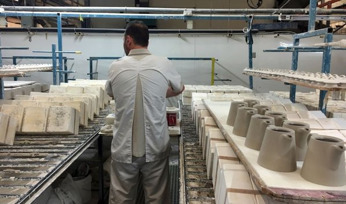
Types of ceramic:
- Traditional Ceramics
It includes ceramic tiles such as tiles, tiles and also pots, vases, bricks and other objects that do not have such high requirements compared to the next group.
- "Advanced" creature or engineering ceramics
They are generally materials with higher demands and obtained from the purest raw material. They are abstracted motif, cutting tools for machining, refractory bricks for furnaces.
The main raw materials are Feldspar (particularly potassic), silica and clay. In addition to these three main components, the ceramics may present additives to increase their processing or their final properties. After subjected to a slow drying in the shade to remove most of the water, the molded part is subjected to high temperatures which give it rigidity and resistance by the fusion of certain components of the mass, fixing the enamels of the surfaces. Pottery can be an artistic activity, in which artifacts are produced with aesthetic value, or an industrial activity, through which artefacts with utilitarian value are produced. According to the material and techniques used, the pottery is classified into:
terracotta - clay cooked in the oven without being glazed,
though sometimes painted.
Glazed ceramic - the best known example is the tile.
stoneware - glazed ceramic, sometimes painted,
made of paste of quartz, feldspar, clay
and sand.
earthenware - fine crockery obtained from porous
paste cooked at high temperatures,
varnished or coated with enamel on
which are painted decorative motifs.
Artistic Ceramics
With the possible exception of the manufacture of bricks and tiles, generally used in the construction since ancient times in Mesopotamia, from a very early period ceramic production gave a fundamental importance to aesthetics, since its product, for the most part, was destined to trade. Perhaps for this reason most cultures, from its dawn, eventually developed their own styles that over time consolidated trends and evolved in artistic improvement, to the point of being able to situate the cultural state of a civilization through the study of ceramic artifacts which it produced. Apart from ceramics for construction, purely industrial ceramics only occurred in antiquity in large shopping centers, beginning a vigorous phase with the Industrial Revolution. With the use of porcelain, the pottery has reached high levels of sophistication. A notorious example of artistic ceramics in Portugal is the barrista Rosa Ramalho who used the clay to create the surrealistic figures of her imagination.
Industrial ceramics
The ceramic industry is responsible for the manufacture of floors, tiles and coating of wide application in the civil construction, as well as for the manufacture of bricks, slabs, tiles, among others. Also, the sector called technological ceramics, is responsible for the manufacture of components of high resistance to heat and of great resistance to compression. Currently the ceramic is the object of intense research in order to take advantage of several physical and chemical properties of a large number of materials, mainly semiconductivity, superconductivity and adiabatic behavior.
MULTI – CACHE
This multi-cache is composed of two points: the initial setup located outside the "pottery" (WP0) and the GZ. To find the GZ you must find the values of A and B, being:
A = number of letters in the tile of the "Jesus child with Saint Joseph"
existing, on the facade of the building, to the right of the door;
B = number of birds (seaguls)existing on the tile of "Infante D. Henrique",
Photos of artist “P. Cavaco”.
To find the GZ of this multi:
N 37º 45, (0)(2A + 44)
W 025º 34, (30A-10B-10)

THE CACHE
The box has a conventional format.
Please be discreet, do not do forced logs, or to post photos that they can report the cache.
Leave the container as they found it!